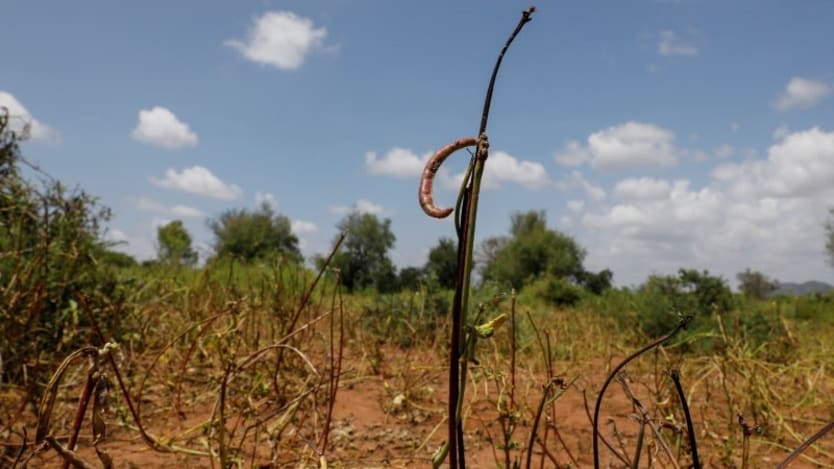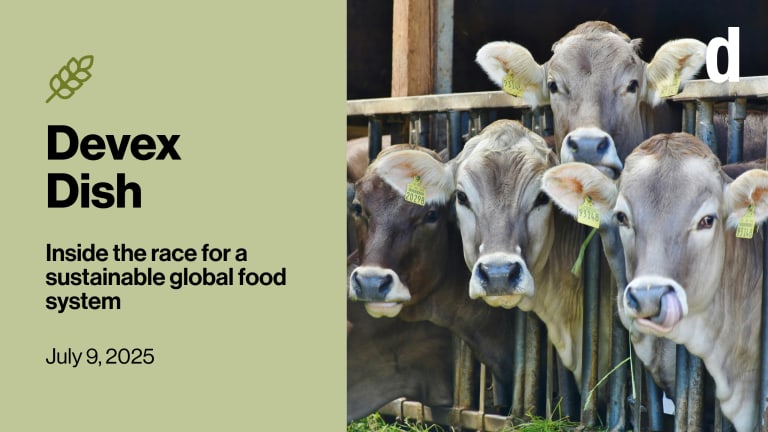
WASHINGTON — The World Bank has announced $500 million to help countries in Africa and the Middle East respond to desert locust swarms, while the Food and Agriculture Organization has increased its appeal to deal with the crisis.
The Emergency Locust Response Program, approved by the World Bank’s board of executive directors Thursday, will support countries battling locust infestations and investing in surveillance and early warning systems to prevent future outbreaks. The first package of $160 million will go to Djibouti, Ethiopia, Kenya, and Uganda.
Opinion: Protecting East Africa’s food supply during COVID-19
Swarms of locusts could wreak havoc on the region’s food supply at a time when shutdowns and market disruptions are also threatening to create a food crisis. The Gates Foundation’s Rodger Voorhies takes a look at the interventions needed.
World Bank President David Malpass told reporters that as the world responds to the COVID-19 pandemic, the locust swarms created a “double crisis” in some of the poorest and most fragile countries.
“Without action to control the spread, the locust swarms will damage the food systems. And those are critical at feeding and employing millions of people and they often are the power underneath the region’s economies,” Malpass said. “Households and families are struggling to meet the basic needs: There’s nutrition, health care, and education that may end up being neglected, and that hinders long-term health and development, especially for children.”
The current epicenter of the locust outbreak is in the Horn of Africa, where nearly 25 million people are already food insecure. Potential damage to crops and livestock in the region could reach $8 billion in 2020 alone if extensive and coordinated control measures are not taken to reduce locust populations and prevent a spread to new areas, the bank said.
The World Bank’s response will prioritize emergency assistance such as social protection and livelihoods programs, including cash transfers to help meet basic needs. It will also help provide seed and fodder packages to help farmers and communities restore livelihoods and care for animals.
Depending on the conditions of each country, money could come in the form of both loans and grants, said Holger Kray, practice manager for agriculture and food security at the bank. Governments can request funding for either reactive or protective purposes and must have a clearly defined country action plan around three pillars of monitoring and control, protection and restoration, and coordination and preparedness.
The $500 million will be allocated over the course of three years, which Kray said was currently the best prediction for how long the situation could last. The bank had previously provided $13.7 million for Kenya and $600,000 for Djibouti to respond to the locust crisis.
“This is an emergency that … changes over time in terms of location and moves from one country and region to another.”
— Keith Cressman, senior locust forecasting officer, FAO“One of the defining features of the Emergency Locust Response Program is actually that we are pre-positioning funding for other countries to join the protective umbrella of this program,” Kray said, emphasizing that locusts “know no borders.” “Since this is a natural phenomenon and one that is quite, to a degree, climate-induced, there’s always an element of flexibility that needs to be built in. … Should we see a further increase in the iteration of the situation or a spread even into additional geographies within Africa, then the bank of course has its mechanisms to ... further scale the programs.”
The World Bank said that through the Emergency Locust Response Program, it would enhance ongoing collaboration with FAO, which on Thursday announced an increase in its locust appeal from $153 million to $311 million. Keith Cressman, FAO senior locust forecasting officer, told reporters that money will be needed as the locusts spread from Kenya, Somalia, Ethiopia, southern Iran, and parts of Pakistan into West Africa, India, and Yemen in the coming months. More than 75% of the FAO funding request has been received, Cressman said, with more money in the pipeline.
FAO is assisting countries with monitoring and control operations and has sent experts to countries that may not have relevantly skilled professionals. Training has been a major issue, Cressman said, because most countries have not experienced locust swarms for decades and methods have to be adapted to abide by social-distancing requirements. Most countries have exempted locust-control teams from coronavirus mobility restrictions, allowing them to continue field activities, he said.
FAO has also provided aircraft for aerial spraying, and strong rainfall is helping the campaign, Cressman said. Rain levels are also an encouraging sign for the food supply as farmers enter planting season, and as of now, famine is not predicted for East Africa.
“By nature, locust-control campaigns, locust emergencies are already very, very difficult. Because it’s a rolling emergency — not like an earthquake or a flood that happens once, and then there’s the response and the cleanup operations,” Cressman said. “This is an emergency that continues to unfold. It changes over time in terms of location and moves from one country and region to another.”








